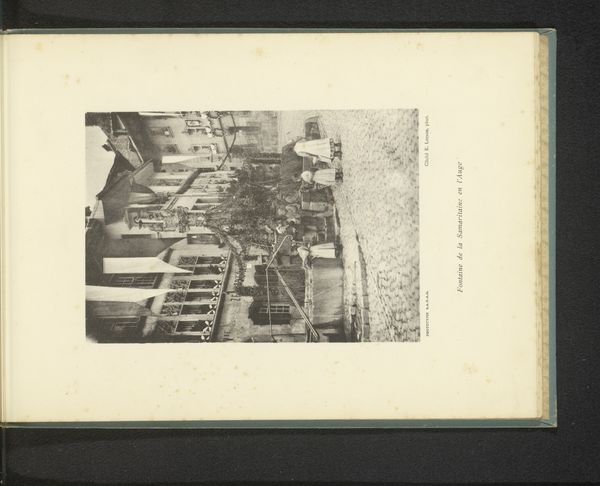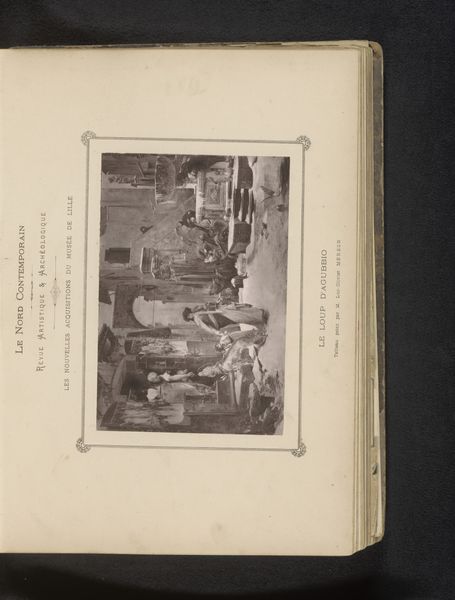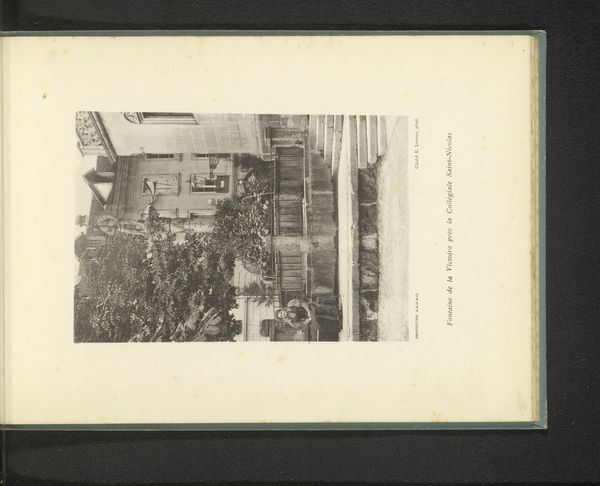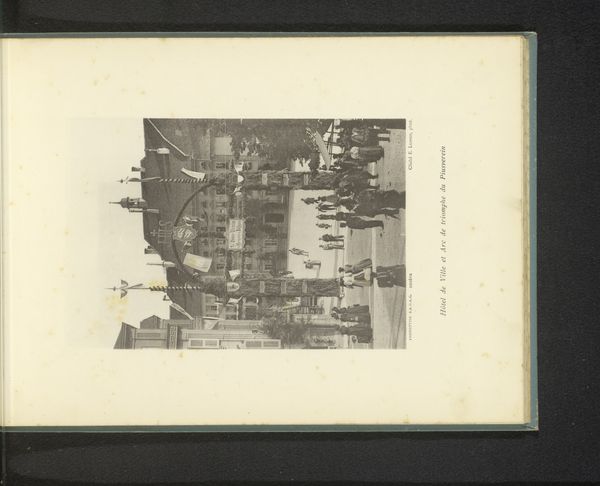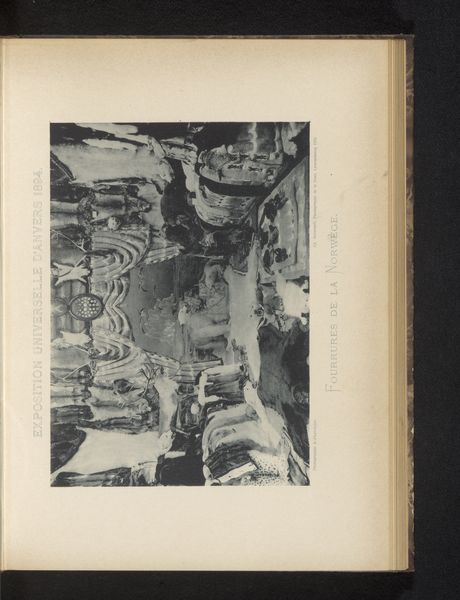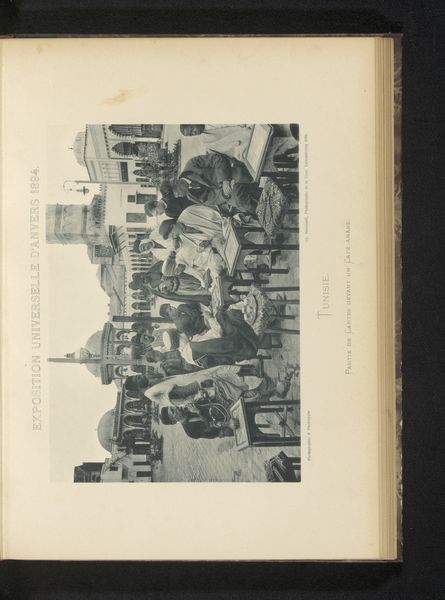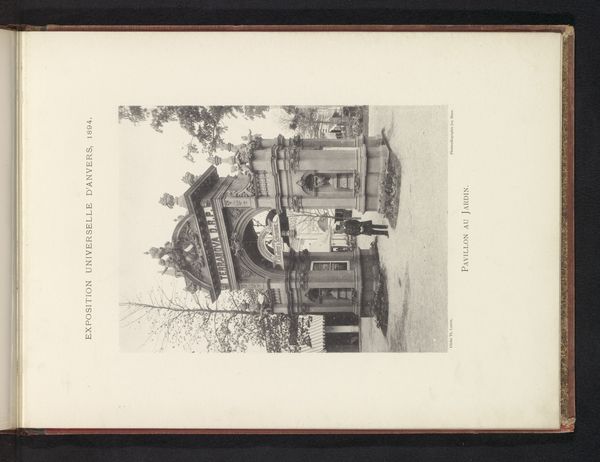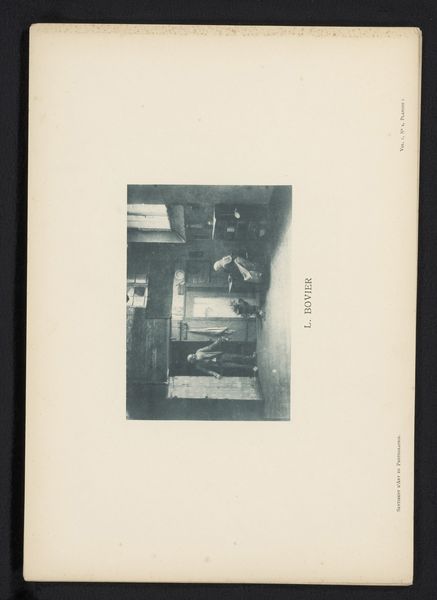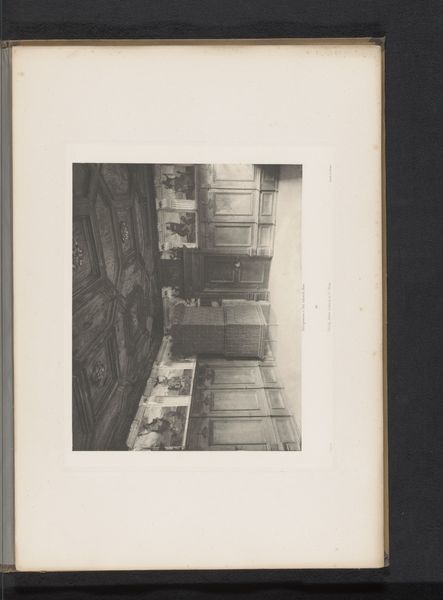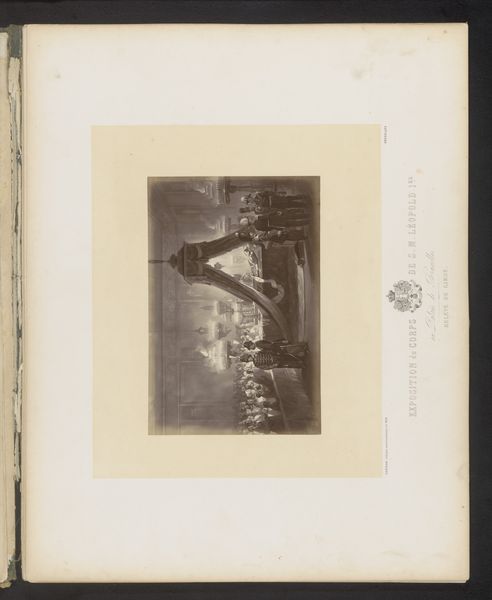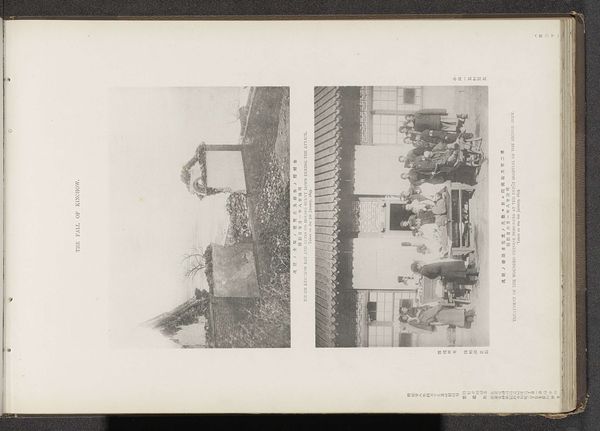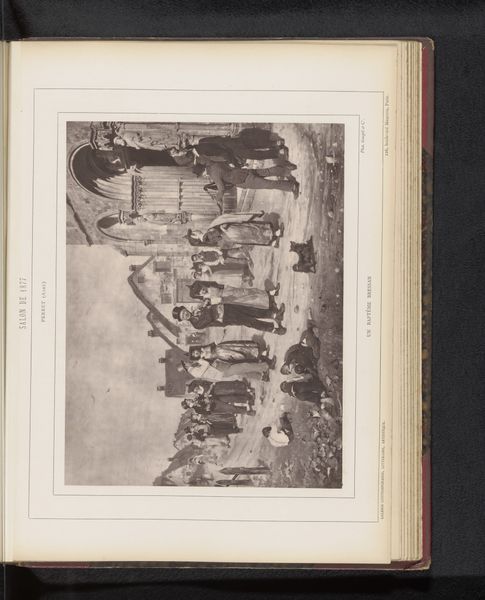
photography, gelatin-silver-print
#
pictorialism
#
street-photography
#
photography
#
gelatin-silver-print
#
cityscape
#
monochrome
Dimensions: height 162 mm, width 112 mm
Copyright: Rijks Museum: Open Domain
Curator: We’re looking at “Gezicht op de Rue de Lausanne met vlaggen en de kathedraal van Fribourg,” a gelatin-silver print made around 1897 by Ernest Lorson. It offers a fascinating glimpse into street photography during the rise of pictorialism. Editor: My first impression is how incredibly dynamic the composition is. The diagonal thrust of the street, the fluttering flags—it feels so full of movement, despite being a still image, and the monochrome really strips it down to shape and light. Curator: The image provides a street-level view in Fribourg at the end of the 19th century. The prominence of the Swiss flags speaks to rising nationalism and civic pride during this period, and the inclusion of the cathedral firmly grounds the photograph in the socio-political fabric of the town. It makes me wonder what occasion merited so many flags. Editor: Agreed, those flags certainly activate the space. I also can’t help but notice the subtle tonal range. Look at the interplay between light and shadow on the street surface and on the architectural elements; there’s this almost painterly quality. I feel like I can see the early signs of a breakaway from strictly representational photography in that focus on form. Curator: The image undoubtedly reflects a specific historical moment in the intersection of technology, social identity, and artistic intention, especially within the evolving landscape of photography as a publicly consumed medium. Street scenes such as this gained prominence through widespread publishing and postcards. Editor: You make me think about the formal choices more; the shallow depth of field, the contrast...it guides your eye purposefully around the frame. One can easily view these aesthetic considerations without getting mired in external politics. The photographer composed this shot almost like a painting, organizing elements to elicit a particular experience for the viewer. Curator: But how do these aesthetic considerations not reflect contemporary social priorities? By manipulating the public's experience in a town like Fribourg, Lorson participates in actively constructing social space. Editor: An interesting perspective to keep in mind, of course. Curator: Exactly. This dialogue is useful for contextualizing the importance of the subject and photographer within a larger art historical narrative. Editor: It really lets you appreciate how the choices in composition can alter an entire read, if not the viewer’s immediate perception.
Comments
No comments
Be the first to comment and join the conversation on the ultimate creative platform.
